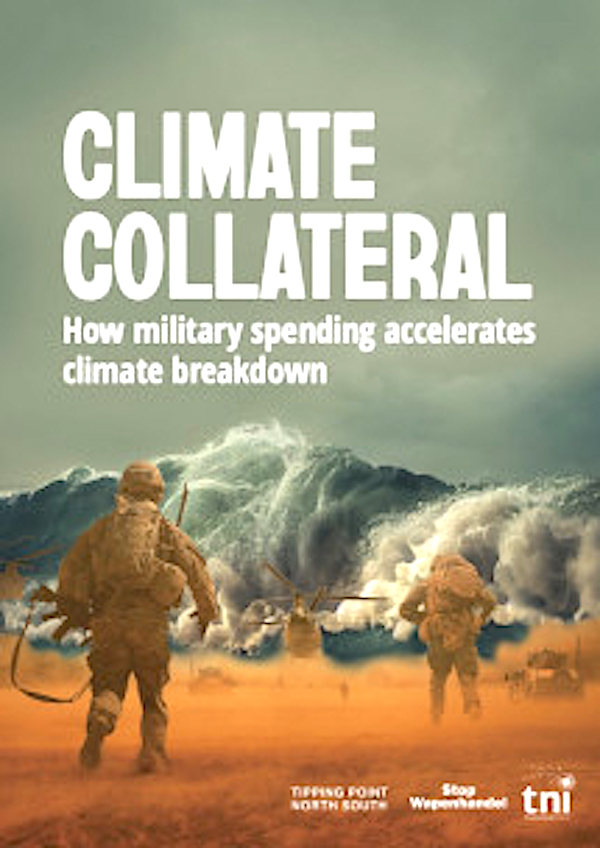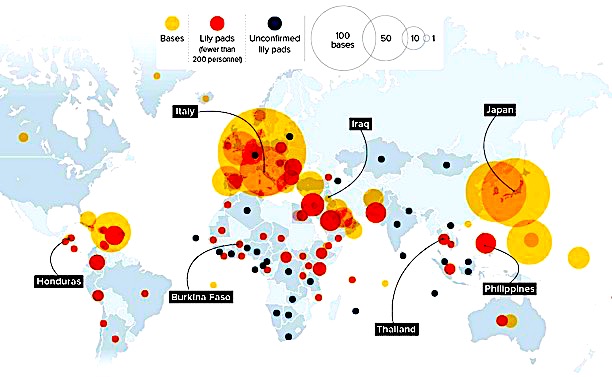Editorial: United States Antiwar Movement Must Embrace the Environmental Movement! No to Wars! No to Global Warming!
The single isue concept antiwar movement, of the past, is not campatable with current world conditions In today’s world, war and war and global warming are inseporatable! One cannot oppose wars and not oppose global warming! A vote for war is a vote for global warming!!
The most effective way to oppose the milirary industrial comeplex’s, war budget is to also point out it funds clobal warming!
The Slogan for Today’s Antiwar Movement Should Be:
No to Wars! Not to Global Warming!
Budget for Climate Action, Not War Until the passage of the Inflation Reduction Act last year, the average taxpayer gave $2,375 each year to the military—and just $6 to renewable energy projects. As the hottest summer in human history approached its end, tens of thousands of climate marchers rallied in New York to call for bold climate solutions. Meanwhile, lawmakers in Washington lurched toward another fight over the federal budget. More than ever, the U.S. needs to get serious about climate. And to do that, we need to re-prioritize what’s in that budget. As it stands, more than half of the discretionary budget that Congress allocates each year goes to the Pentagon. Until the passage of the Inflation Reduction Act last year, the average taxpayer gave $2,375 each year to the military—and just $6 to renewable energy projects.Climate Collatteral: How Military Spending Accelerates Climate Breakdown
Conclusion
This report has shown that all possible resources and capacity need to be thrown into defence – the defence of the planet and of every living being as we stand on the precipice of catastrophic climate change. It has also shown that the world’s major polluting nations are not prioritising climate action, nor dedicating the resources needed to help the poorest countries adapt to adverse climate impacts. Rather, they are investing in an accelerated arms race that is spewing even more GHGs into the atmosphere and diverting resources and capacity from tackling the climate crisis. The current year – 2022 – has seen a peak in military spending, with a crescendo of calls for more. This could not come at a worse time, when climate scientists are warning that there is a small and shrinking window of time to act decisively. Worse still, the largest military powers are also adding fuel to the fire by selling weapons to the governments of many impoverished countries that are most affected by climate change. Instead of providing finance to the poorest communities to adapt and cope with the negative consequences of climate change, the richest countries are striking arms deals that stoke divisions, provoke violence and enable repression by military and security forces. Militarisation of climate-affected communities is the worst form of climate maladaptation. This path of militarisation and international division is not inevitable. It is the result of political choices. The end of the Cold War in the early 1990s showed that it is possible for major warring powers to negotiate and agree to reduce military spending, increase collaboration, and invest in peace. That moment was lost, and now seems further away than ever. It is imperative for everyone’s sake to recapture that opportunity and for all civil society to join together to demand it. The fact that climate change knows no national borders underlines the need to unite across countries and states to find effective solutions to a global crisis. It is also an opportunity to establish common ground. Joining forces across borders to confront the biggest threat to our shared planet is the best and only way to build a secure and peaceful future.
Another Global Warming Elephant in the Room: The Pentagon Military Industrial Complex! By Roland Sheppard

The United States is ranked #1 in global warming emitions (Ranking Global Warming Contributions by Country) but, actually, the United States has contributed far more global warming admission, if you consider the 800 U.S. military bases and wars, throughout the world. From The Military Pumps Out Staggering Quantities of Toxic Waste, Water and Air Pollution and Radiation Environmentalists are ignoring the elephant in the room … the world’s largest polluter: . . . The Pentagon is also one of the largest greenhouse gas emitters in the world … and yet has a blanket exemption from all greenhouse gas treaties.The defense department also uses open-air burn pits which send a parade of horribles into the air. Sea life is not exempt. And the military has long been is a flagrant user of chemical weapons and depleted uranium . . . which can trash ecosystems and human health. And Despite our unorthodox presidential election, America’s overseas military bases are largely taken for granted in today’s foreign policy debates. The U.S. maintains a veritable empire of military bases throughout the world— about 800 of them in more than 70 countries. Many view our bases as a symbol of our status as the dominant world power. But America’s forward-deployed military posture incurs substantial costs and disadvantages, exposing the U.S. to vulnerabilities and unintended consequences. (See:Why We Should Close America’s Overseas Military Bases)